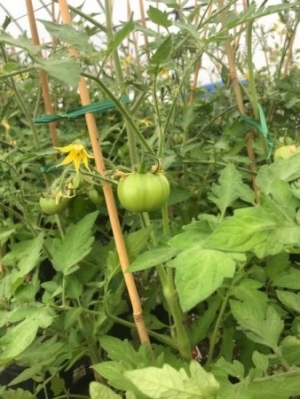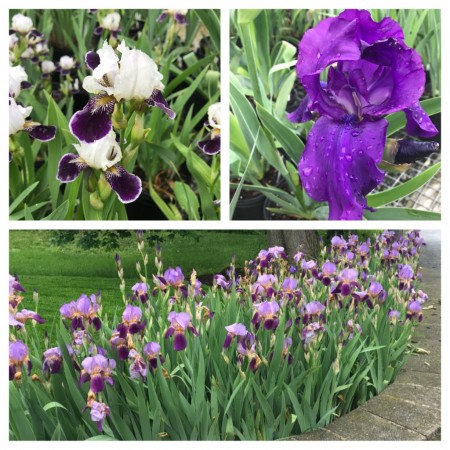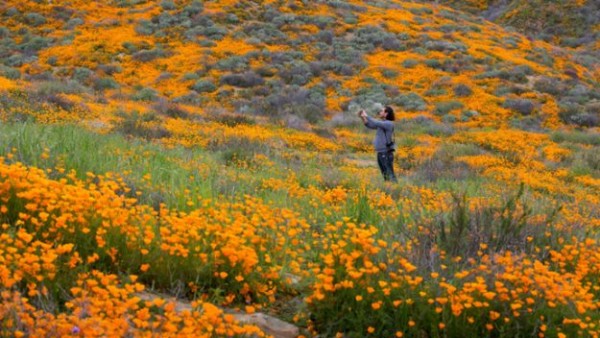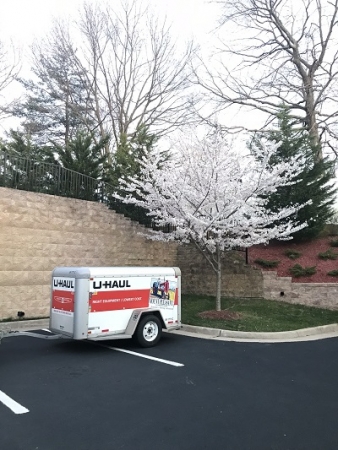 Most of the gardening articles dad and I write reflect what is currently happening in our own gardens, or in dad’s case- bird watching experiences. Repeat questions are also a trigger for our musings. So here are my thoughts on a question I got A LOT last week.
Most of the gardening articles dad and I write reflect what is currently happening in our own gardens, or in dad’s case- bird watching experiences. Repeat questions are also a trigger for our musings. So here are my thoughts on a question I got A LOT last week.
I don’t have a lot of room- what herbs and vegetables can I grow in a container?
Let’s face it- most of us don’t have acres to work with. But it is very rewarding to walk out your door and be able to pick fresh produce and herbs to spice up (literally!) your meals. Some edibles lend themselves well to container gardening. Continue reading for some basics.
1.Container choice- All containers for outside need drainage holes at the bottom. You can use fancy terra cotta or ceramic, half wooden whiskey barrels or even old 5-gallon buckets as long as they have drainage holes drilled in the bottom.
2.Potting soil- a peat-based soilless potting soil is best. Blends containing coconut coir, bark or peanut hulls helps with drainage.
3. Fertilizer- Most vegetables are fairly heavy feeders. In the ground, plants have access to the microbes that break down the organic materials in the soil, compost and supplemental fertilizer helps. In containers, feeding is more important. Tomatoes and peppers need supplemental calcium to prevent blossom end rot. If the lower leaves are looking yellow, add fertilizer with nitrogen, if you see no blossoms on vegetables, but tons of leafy green growth reduce feeding.
4. Plant selection-herbs are a great choice for containers. Basil, dill, cilantro can be started from seedlings or seed packets. Perennial herbs thyme, rosemary and mint grow well in pots in a sunny location. Likely they will not survive outside over the winter but can live in a basement or garage in a semi-dormant state as long as they are not overwatered.
Leafy vegetable like lettuce, kale and Swiss Chard are also good candidates for pots. Frequent harvest will keep the plant rejuvenated and producing more leaves. These plants will probably “bolt” or flower and go to seed in the heat of summer. Rip them out and replace with herbs or heat-loving vegetables.
Taller vining crops like cucumbers or tomatoes need large containers at least 5 gallon or larger and something for support like a trellis or metal cage. Here is where a little research into shorter or “patio varieties” will really help.
Seeding root crops like carrots, radish, beets or turnips in containers works well. In rocky soil, root vegetables tend to get a bit gnarly. The loose, rock-free soil of pots makes for beautiful carrots.
Grow unusual varieties that are hard to find at the store. Purple cauliflower, white carrots, broccolini, heirloom tomatoes, anything else that tickles your fancy.
I’ve read several articles extolling the virtues of growing cabbage or broccoli in a pot. Those are pretty big plants that only give one main harvest. It seems like a waste of container space, but if you really love fresh broccoli knock yourself out.
A gentleman from Philadelphia stopped in the nursery with a two-page spreadsheet a few weeks ago. He grows over 100 containers of edible herbs, vegetables and flowers. He has an extensive automatic drip watering system and a highly detailed fertilizing regime. He had calendars when one crop was to be ripped out and the rotations planted. Everything was mapped and planned. He must be an engineer. But he was successful growing food eight months of the year in very limited space.
5. Be vigilant. Keep up with the harvest- removing leaves of herbs, and vegetables as they ripen will keep the plants producing. Keep an eye out for insects and disease and pull damaged plants.
6. Enjoy! Either fresh basil and tomatoes, a leafy green salad or bright crunchy cucumber taste that much better when you grew them yourself.
 It looks like we’re going to have another wet spring. After last season’s record-breaking rainfall, we’re getting off to a damp start.
It looks like we’re going to have another wet spring. After last season’s record-breaking rainfall, we’re getting off to a damp start. The front page of Monday’s Wall Street Journal had a funny article “Selfie-Seeking Tourists are Crushing California’s Superbloom”. The authors Nour Malas and Ian Lovett went on to talk about the snare of traffic and chaos caused by tens of thousands of visitors flocking to the small town of Lake Elsinore, CA.
The front page of Monday’s Wall Street Journal had a funny article “Selfie-Seeking Tourists are Crushing California’s Superbloom”. The authors Nour Malas and Ian Lovett went on to talk about the snare of traffic and chaos caused by tens of thousands of visitors flocking to the small town of Lake Elsinore, CA. Last week the Pennsylvanian and Iowan branches of the family converged in Quantico, Virginia to celebrate our nephew’s graduation from the Marine Corps Officer BASIC school. We had a beautiful day to fête this accomplished young man of whom we are all so proud. I, of course, couldn’t help also staring at the flowers.
Last week the Pennsylvanian and Iowan branches of the family converged in Quantico, Virginia to celebrate our nephew’s graduation from the Marine Corps Officer BASIC school. We had a beautiful day to fête this accomplished young man of whom we are all so proud. I, of course, couldn’t help also staring at the flowers.